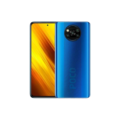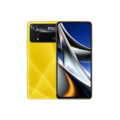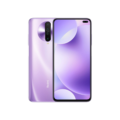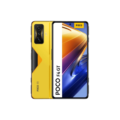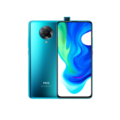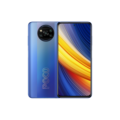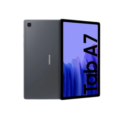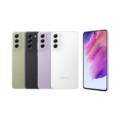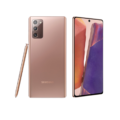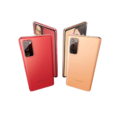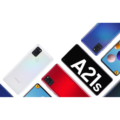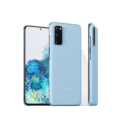Poco F1 Harga Malaysia
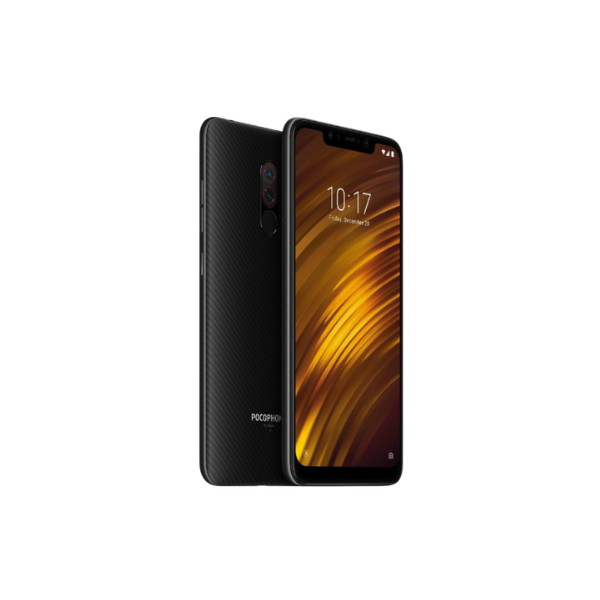

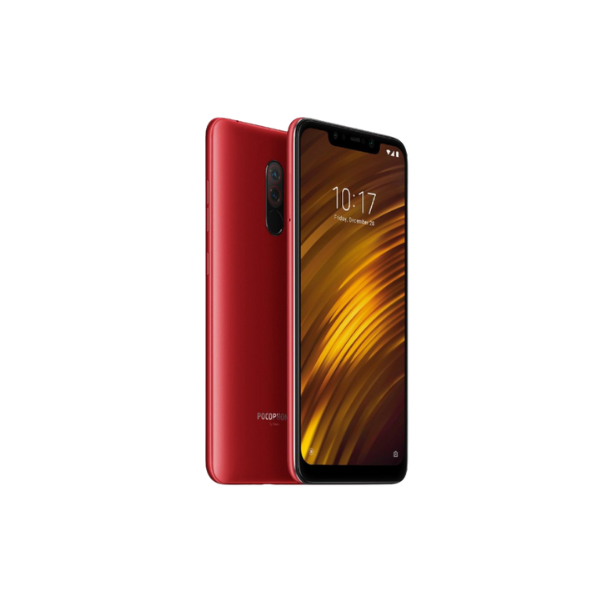
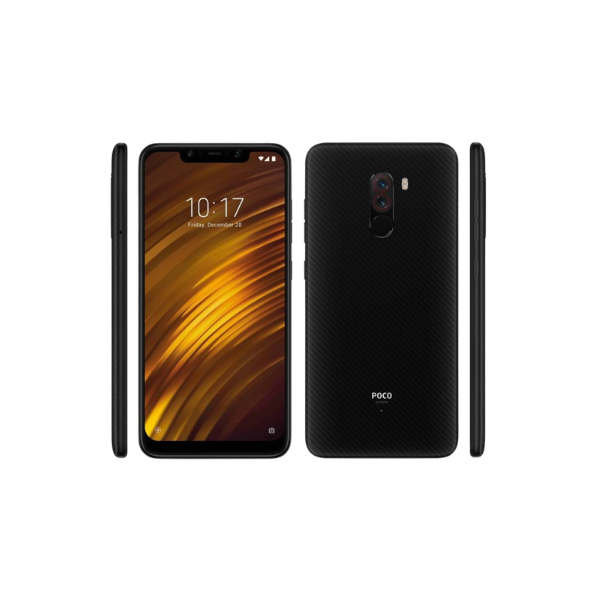
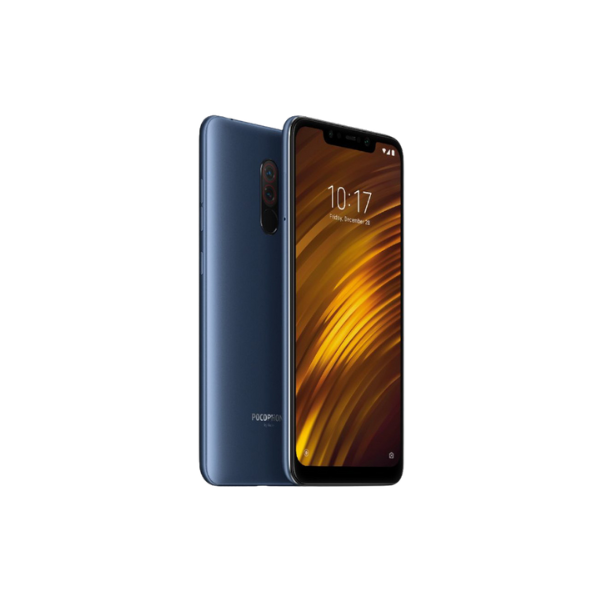
- CPU: Qualcomm SDM845 Snapdragon 845 (10 nm)
- RAM: 6 GB, 8 GB
- Storage: 64 GB, 128 GB, 256 GB
- Display: IPS LCD
- Camera: 12 MP Dual Camera
- OS: Android 8.1 (Oreo), MIUI 12
- AnTuTu Total Score: 412.701
Poco F1 Harga Malaysia Spesifikasi Malaysia
General
| Device Type | Smart Phone |
| Model | M1805E10A, POCO F1 |
| Announced | 22 August, 2018 |
| Released | 27 August, 2018 |
| Status | Available |
| Price | RM999 |
Design
| Type <strong>Design Type</strong> called form factor refers to a mobile phone's size, shape, and style as well as the layout and position of major components of phone. There are three major form factors seen in mobile phones => bar phones, folding phones and sliding phones. | Bar |
| Dimensions | 155.5 x 75.3 x 8.8 mm (6.12 x 2.96 x 0.35 in) |
| Weight | 182 g (6.42 oz) |
| Body Type | Glass front (Gorilla Glass), plastic back, plastic frame |
| Colors | Graphite Black, Steel Blue, Rosso Red, Armored Edition with Kevlar |
Network
| 4G Network | 1, 3, 5, 7, 8, 20, 38, 40, 41 |
| SIM <strong>SIM</strong> (Subscriber Identity Module) is a small card that contains mobile network subscriber's account information. This allows the phone using the card to attach to a mobile network. The SIM card is most commonly associated with GSM and UMTS mobile networks. Moving a SIM card from one phone to another allows a subscriber to switch mobile phones without having to contact their mobile network carrier. SIM cards can also be used by a phone to store limited amounts of data, such as phone numbers and text messages. | Standard SIM |
Display
| Display Type <strong>Display Technology => </strong> A number of display technologies and types used in mobile phones => TFT (Thin Film Transistor), IPS (In-Place Switching), OLED (Organic Light Emitting Diode), AMOLED (Active-Matrix Organic Light-Emitting Diode), Super AMOLED (an even advanced version of AMOLED), Resistive Touchscreen (Resistive touchscreens contain two layer of conductive material with a very small gap between them which acts as a resistance), Capacitive Touchsceen (Capacitive touchscreen technology consists of a layer of glass coated with a transparent conductor) | IPS LCD |
| Size | 6.18 inches, 96.2 cm2 (~82.2% screen-to-body ratio) |
| Resolution | 1080 x 2246 pixels, 18.7:9 ratio |
| Display Colors <strong>Display Colors</strong> is refers to the number of different shades of colors that the screen is capable of displaying => 64K colors, 256K colors and 16 million colors, Obviously 16M is highest available range of colors and better than others. | 16 Millions Colors |
| Pixel Density <strong>Pixel Density (PPI)</strong> is refers to the concentration of pixels on a particular display, measured in pixels per inch (ppi). Pixel density is calculated by dividing the diagonal pixel resolution of a display by its diagonal size, higher pixel density better display quality. | (~403 ppi density) |
| Touch Screen | Yes, Multitouch |
| Display Protection <strong>Display Protection => </strong> Gorilla Glass is a special alkali-aluminosilicate glass shield with exceptional damage resistance that helps protect mobile displays from scratches, drops, and bumps of everyday use, It is always better to go for a smartphone with Gorilla Glass for that added protection and peace of mind. | Corning Gorilla Glass (unspecified version) |
Camera
| Rear Camera <strong>Camera</strong> is able to capture photographs and usually videos, The most important characteristics of a camera are the resolution (measured in megapixels), lens focus type (fixed or automatic), higher megapixel cameras are known to capture higher quality photos, but not always a good measurement of the photos quality. |
Dual Camera 12 MP, f/1.9, 1/2.55", 1.4µm, dual pixel PDAF 5 MP, f/2.0, (depth) |
| Front Camera | 20 MP, f/2.0, (wide), 1/3", 0.9µm |
| Image | 2160p |
| Video | 4K@30/60fps, 1080p@30fps (gyro-EIS), 1080p@240fps, 720p@960fps |
| Camera Features | Dual-LED flash, HDR, panorama |
Software
| Operating System <strong>OS => </strong> Every computer system run on a base software called Operating System (OS). Operating System controls all basic operations of the computer (such as smartphone, PDAs, tablet computers and other handheld devices). The Operating System allows the user to install and run third party applications (apps), apps are used to add new functionality to the device. | Android 8.1 (Oreo), upgradable to Android 10 |
| User Interface <strong>UI</strong> or user interface of a device is the look and feel of the on-screen menu system. How it works, its color scheme, how it responds to button presses, all of these things are part of the user interface. | MIUI 12 |
Hardware
| Chipset <strong>Chipset</strong> is a group of integrated circuits designed to perform one or a more dedicated functions, often with real time computing constraints, Popular smartphones are equipped with more advanced embedded chipsets that can do many different tasks depending on their programming. | Qualcomm SDM845 Snapdragon 845 (10 nm) |
| CPU <strong>CPU</strong> (Central Processing Unit) mostly known as processors, CPU processes instructions in order to carry out certain functions that make your device operate properly. Processors are often described as the brain of computers, smartphones and tablets, Smartphones and tablets rely on processors to carry out their every task, Processors are an incredibly important factor in selecting any type of computing device, including your smartphone. | Octa-core (4x2.8 GHz Kryo 385 Gold & 4x1.8 GHz Kryo 385 Silver) |
| GPU <strong>GPU</strong> (Graphics Processing Unit) is a single-chip processor designed to rapidly manipulate and alter memory to accelerate the creation of images in a frame buffer intended for output to a display, This includes things such as lighting effects, object transformations, and 3D motion. | Adreno 630 |
| RAM (Memory) <strong>RAM</strong> (Random Access Memory) is a type of computer memory that can be accessed randomly, any byte of memory can be accessed without touching the preceding bytes that allows information to be stored and accessed quickly from random locations. RAM is the most common type of memory found in computer systems, smartphones, tablets and other electronic devices. | 6 GB, 8 GB |
| Internal Storage <strong>Internal Storage</strong> is a data storage space (flash memory) mostly used in smartphones, tablets and other electronic devices where operating system, apps, music, photos, videos, files and other user data Is stored. | 64 GB. 128 GB, 256 GB |
| Card Slot <strong>Memory Card Slot</strong> is a special slot for inserting a memory card. Memory cards allow you to expand the phone's built-in memory, A memory card (sometimes called a flash memory card or a storage card) is a small storage medium used to store data such as text, pictures, audio, and video, for use on small, portable or remote computing devices such as mobile phones, mp3 players, digital cameras. | microSDXC (uses shared SIM slot) |
| Sensors <strong>Sensors</strong> are electronic components that detects and responds to some type of input from the physical environment. The specific input could be light, heat, motion, moisture, pressure and location, The output is generally a signal that is converted to use in computing systems, a location sensor, such as a GPS receiver is able to detect current location of your electronic device. | Infrared Face ID, fingerprint (rear-mounted), accelerometer, gyro, proximity, compass |
Battery
| Battery Type <strong>Battery Type => </strong> Cell phones run on various kinds of batteries depending on the manufacturer, phone size or shape and features. There are basically four types of cell phone batteries => Lithium Polymer, Lithium Ion, Nickel Metal Hydride and Nickel Cadmium. | Li-Poly (Lithium Polymer) |
| Placement | non-removable |
| Capacity <strong>Battery Capacity</strong> is a measure (typically in Amp-hr) of the charge stored by the battery, and is determined by the mass of active material contained in the battery. The battery capacity represents the maximum amount of energy that can be extracted from the battery under certain conditions. | 4000 mAh |
| Charging | 18W wired, QC3 |
Connectivity
| Bluetooth <strong>Bluetooth</strong> is a wireless communications technology for exchanging data between mobile phones, headsets, computers and other network devices over short distances without wires, Bluetooth technology was primarily designed to support simple wireless networking of personal consumer devices. | 5.0, A2DP, LE, aptX HD |
| Wi-fi <strong>Wi-Fi</strong> is a popular wireless networking technology using radio waves to provide high-speed network connections that allows devices to communicate without cords or cables, Wi-Fi is increasingly becoming the preferred mode of internet connectivity all over the world. | Wi-Fi 802.11 a/b/g/n/ac, dual-band, Wi-Fi Direct, DLNA |
| Wi-fi Hotspot | |
| USB | USB Type-C 2.0, OTG |
| GPS <strong>GPS</strong> The Global Positioning System is a satellite-based radio navigation system, GPS permits users to determine their position, velocity and the time 24 hours a day, in all weather, anywhere in the world, In order to locate your position, your device or GPS receiver must have a clear view of the sky. | GPS, GLONASS, BDS |
| NFC <strong>NFC</strong> (Near field communication) is a set of standards for smartphones and similar devices to establish peer-to-peer radio communications with each other by touching them together or bringing them into proximity, usually no more than a few inches. | |
| Wireless Charging <strong>Wireless Charging</strong> (Inductive Charging) uses an electromagnetic field to transfer energy between two objects. This is usually done with a charging station. Energy is sent through an inductive coupling to an electrical device, which can then use that energy to charge batteries or run the device. | No |
Media
| Loudspeaker | Yes, with stereo speakers |
| Handsfree | 3.5mm jack |
Salam pembaca! Dalam dunia yang dibanjiri dengan pilihan telefon pintar, Poco F1 muncul sebagai suatu keajaiban yang patut diperhatikan.
Sebagai seorang pengulas yang berpengalaman dalam dunia smartphone, mari kita telusuri Poco F1 Harga Malaysia, reka bentuk, paparan, kamera, perisian, prestasi, serta kelebihan dan kekurangan telefon ini.
Reka Bentuk
Poco F1 hadir dengan reka bentuk serba lengkap dan berdaya tahan tinggi. Dengan kaca hadapan berteknologi Gorilla Glass yang kokoh dan bingkai plastik berkualiti tinggi, ia memancarkan rasa kesan elegan dalam pelbagai pilihan warna seperti Graphite Black, Steel Blue, Rosso Red, dan Armored Edition dengan Kevlar.
Paparan
Paparan 6.18 inci jenis IPS LCD pada Poco F1 memukau dengan resolusi 1080 x 2246 piksel. Dengan nisbah skrin-ke-tubuh yang cemerlang, ia memastikan paparan yang jelas dan tajam untuk hiburan dan penggunaan harian anda.
Kamera
Sektor kamera Poco F1 menawarkan daya saing dengan kamera belakang dwi-kamera 12 MP dan 5 MP untuk potret berkualiti tinggi. Kamera hadapan 20 MP memberikan swafoto yang memukau dan sesuai untuk panggilan video berkualiti tinggi.
Perisian
Berkuasa dengan Snapdragon 845 dan MIUI 12 berdasarkan Android 8.1 (Boleh naik taraf ke Android 10), Poco F1 memberikan pengalaman pengguna yang pantas dan lancar. MIUI 12 memberi akses kepada pelbagai ciri tambahan dan tema menarik.
Prestasi
Dengan AnTuTu Score 412.701, Poco F1 membuktikan prestasinya yang luar biasa. CPU Snapdragon 845 dan GPU Adreno 630 memberikan daya pengerakan grafik yang hebat untuk permainan dan aplikasi.
Kelebihan
- Prestasi mantap dengan Snapdragon 845.
- Kamera berkualiti tinggi untuk pengalaman pemotretan yang memuaskan.
- Harga Malaysia yang menarik, hanya RM999, menjadikannya pilihan yang berbaloi.
Kekurangan
- Reka bentuk plastik mungkin kurang premium berbanding beberapa pesaing.
- Antara muka MIUI mungkin memerlukan sedikit penyesuaian bagi sesetengah pengguna.
Hayat Bateri
Dikuasakan oleh bateri Li-Poly 4000 mAh, Poco F1 menawarkan daya tahan yang kukuh, sesuai untuk penggunaan sehari-hari dan hiburan berpanjangan.
Poco F1 Harga Malaysia
Poco menawarkan nilai yang mengagumkan dengan Poco F1 Harga Malaysia hanya RM999. Dalam sejauh peninjauan kami, ia adalah pilihan paling berbaloi dalam kelasnya.
Soalan Lazim
Soalan: Adakah Poco F1 sesuai untuk permainan berat?
Jawapan: Ya, dengan Snapdragon 845 dan GPU Adreno 630, ia mampu mengendalikan permainan berat tanpa masalah.
Soalan: Adakah Poco F1 menyokong pengecasan pantas?
Jawapan: Ya, ia menyokong pengecasan pantas 18W.
Soalan: Bolehkah saya mengembangkan storan pada Poco F1?
Jawapan: Ya, ia menyokong kad microSDXC untuk mengembangkan storan.
Soalan: Apakah ciri istimewa dalam MIUI 12?
Jawapan: MIUI 12 membawa ciri tambahan seperti Tema Hidup dan Kebenaran Peribadi, menambah pengalaman pengguna.
Dalam kesimpulan, Poco F1 adalah pilihan hebat untuk sesiapa yang mengutamakan prestasi, kualiti kamera, dan nilai untuk wang. Dengan harga Malaysia yang menarik, ia membuktikan dirinya sebagai telefon pintar yang menyokong gaya hidup aktif dan hiburan tanpa mengosongkan poket anda.

